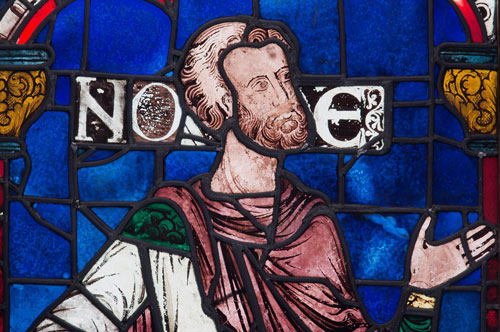James Cameron’s 3-D movie Avatar gave me a four-hour headache. Probably the headache was caused by a combination of the 3-D effect, a seat near the front and at the far edge of the theater, the way the 3-D glasses skewed my plain old glasses beneath, and the dark in which I biked home afterward, my bike light having been stolen while I was in the theater. But I can’t help but also attribute the headache to the movie’s moral corruptness.
It’s a finished corruptness. The easiest way I can think of to describe it is by comparison with The Matrix, a movie which is merely disingenuous, and to some extent struggling with its disingenuousness. The moral lesson that The Matrix purports to offer is that the glossy magic of life inside a simulation distracts from painful truth. But the moral problem faced by the Matrix is that this lesson is betrayed by the fun that the movie has in playing inside the simulation. A viewer enjoys the scenes of jumping over buildings, and of freezing explosions and fistfights in midair and then rotoscoping through them. In fact, the viewer enjoys them much more than the scenes of what, within the conceit of the movie, is considered reality. There may be a brief yucky thrill to learning that in reality people are grown in pods so their energy can be harvested by robots, but as a matter of aesthetics, reality in The Matrix turns out to be drab and constricted by gravity and other laws of physics. The closing sequence, where Neo (Keanu Reeves) plugs back in to the matrix and runs a sort of special-effects victory lap, makes no sense, in terms of the moral victory he is supposed to have won. If he has really joined the blue-pill team, he ought to be sitting down to another bowl of bacterial gruel with his ragged, unshowered friends, and recommitting himself to the struggle. Instead he’s leaping around in a Prada suit. So the viewer departs from the movie with a slightly queasy feeling, a suspicion that visual pleasures aren’t to be trusted. That queasiness is the trace of the movie’s attenuated honesty.
And such queasiness and honesty are completely absent from Avatar. Some might protest: But what about Avatar’s anti-imperialism and anti-corporate attitudinizing? They’re red herrings, in my opinion, planted by Cameron with the cynical intention of distracting the viewer from the movie’s more serious ideological work: convincing you to love your simulation—convincing you to surrender your queasiness. The audacity of Cameron’s movie is to make believe that the artificial world of computer-generated graphics offers a truer realm of nature than our own. The compromised, damaged world we live in—the one with wars, wounds, and price-benefit calculations—can and should be abandoned. All you need is a big heart, like Jake Sully (Sam Worthington), the movie’s war-veteran hero, and the luck of being given a chance to fall in love.
In Cameron’s movie, Sully joins a corporate mission to extract a valuable mineral from a distant planet, Pandora, whose ten-foot-tall blue-skinned aborigines, who call themselves the Na’vi, are uninterested in cooperating with their planet’s exploitation. In order to talk to the Na’vi, and win their hearts and minds, corporation-funded scientists have grown adult-size hybrid human-Na’vi bodies, which humans can remotely operate by lying down inside a pod—a coffin-shaped pod, not unlike the pod where Neo wakes up to discover he’s been soaking his whole life in soup. But whereas Neo jacks into a simulation, Sully jacks into to a new, improved nature, and Cameron musters the mythologies of Henry D. Thoreau, James Fenimore Cooper, and James Lovelace in order to convince. Or anyway the mythologies of The Lorax and The Lion King. The Na’vi respect the balance of nature. They commune with a deist-ecological world-spirit.
Or so the movie would have you believe. Of course you don’t really believe it. You know objectively that you’re watching a series of highly skilled, highly labor-intensive computer simulations. But if you agree to suspend disbelief, then you agree to try to feel that Pandora is a second, improved nature, and that the Na’vi are “digital natives,” to repurpose in a literal way a phrase that depends on the same piece of ideological deception. For on Pandora, all the creatures have been equipped by a benevolent nature with USB ports in their ponytails. When Sully, inhabiting his Na’vi body, first discovers his, the curmudgeonly lead scientist played by Sigourney Weaver snaps at him, “Don’t play with that, you’ll go blind.” This is a little startling. The organ in question looks sort of like flower pistils wriggling out of the hairy end of a tail. But we gradually learn that it isn’t his reproductive organ, which for better or worse we never see. It’s for making “the bond” with various other species on Pandora. In order to ride a horse-like creature, for instance, Sully is instructed to first connect his ponytail-USB port to the horse’s. Same with various species of flying dragon. And if you want to connect to the Na’vi ancestors, you plug your ponytail into the willow-tree-esque tendrils of the Tree of Life. In other words, on Cameron’s Pandora, the animals cavort with one another much like the peripherals on his desk, plugging and playing at will, and the afterlife is more or less equivalent to cloud computing. Once you upload yourself, you don’t really have to worry about crashing your hard drive. Your soul is safe in Google Docs. In a climactic scene, rings of natives chant and sway, ecstatically connected, while the protagonists in the center plug into the glowing tree, and I muttered silently to myself, The church of Facebook. You too can be reborn there.
Why does the digital nativity bother me so much? I think the answer has something to do with the smug anti-corporate plot. In reality—in the reality outside the movie—the Na’vi, too, are a product of corporate America and are creatures of technology, not nature. Now there’s nothing wrong with technology per se, and there’s nothing wrong with fantasy, either. But Avatar claims that there is something wrong with technology, and that the Na’vi of Pandora somehow represent opposition to it. That’s rank mystification, and one has to wonder about motive. I think there are aspects of being human that a movie like Avatar wants to collude with its viewers in denying—aspects of need and of unfixable brokenness. There are traces of this denial in the movie. We never see the Na’vi eating, for instance, except when the transcarnated Sully briefly samples a significantly pomegranate-like fruit. Yet they have high, sharp canines. Vampire-like canines. Indeed, Sully turns into a Na’vi after he lies down in his coffin-pod. Once he takes to his avatar, even his human body has to be coaxed to eat. Like a vampire’s, Sully’s cycles of waking and sleeping become deeply confused. In the unconscious of the movie, I would submit, all the Na’vi are avatars. That is, they are all digital representations of humans, lying elsewhere in coffin pods. And they are all vampires. They have preternatural force and speed, wake when others sleep, and feed on the life-force of mere humans—the humans lying in the pods, as a matter of fact. This, I think, is the strange lure of the movie: Wouldn’t you like to be the vampire of yourself? Wouldn’t you like to live in an alternate reality, at the cost of consuming yourself? Vampires have a culture, a community, feelings. They don’t have bodies, but they have superbodies. The only glitch is this residue offstage, rotting and half-buried, that you won’t ever be able separate from altogether—until, at last, you can.




